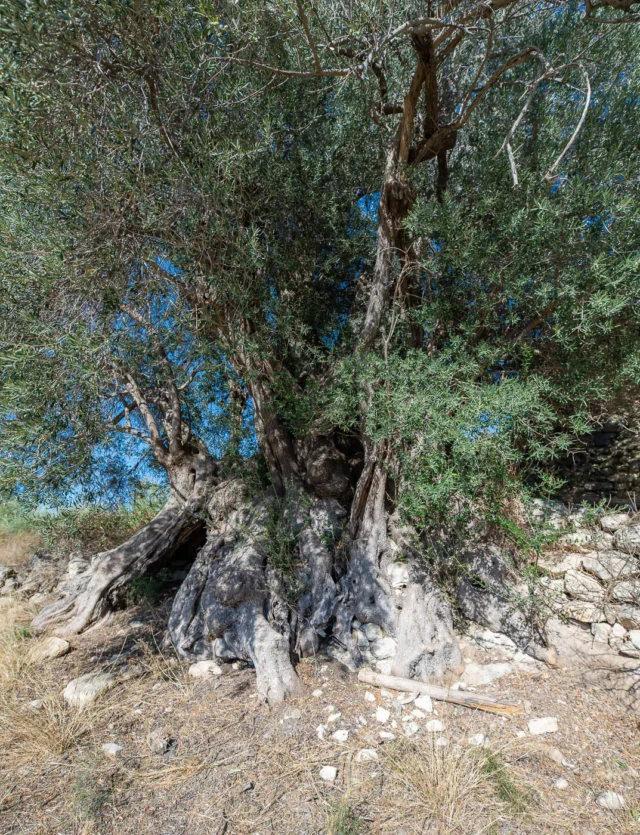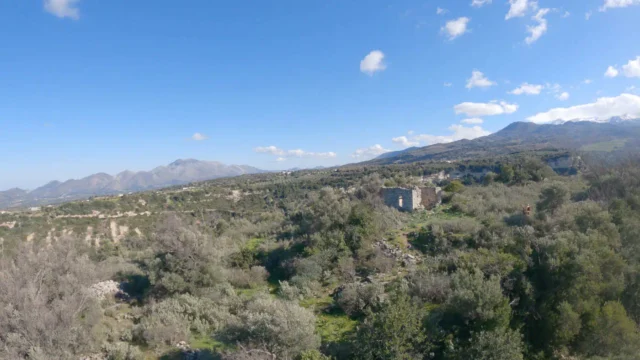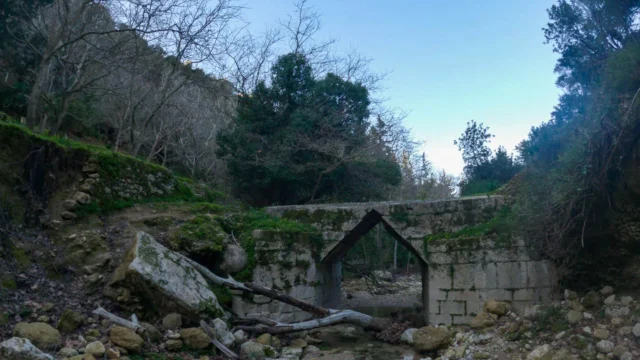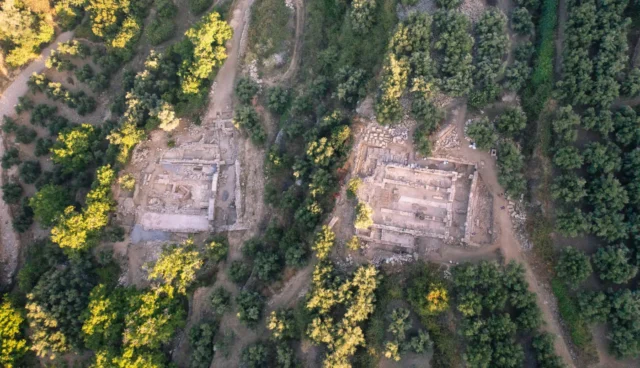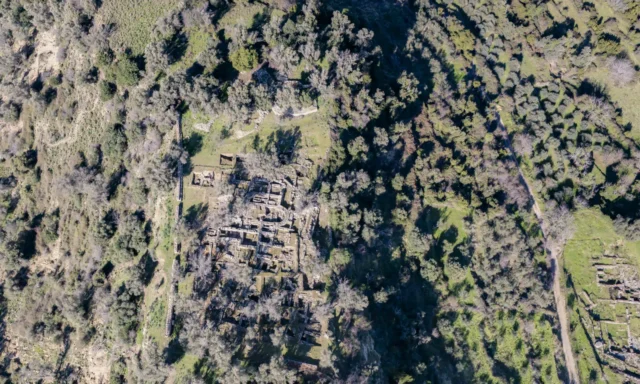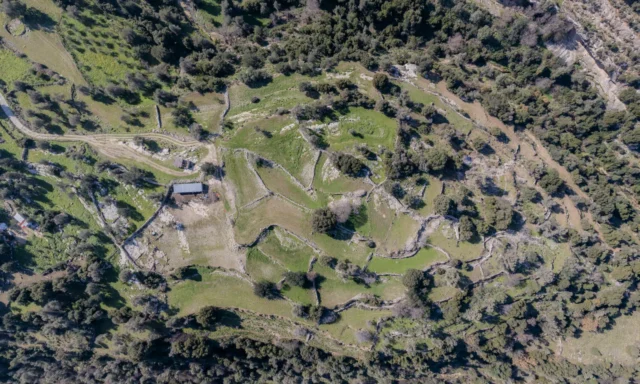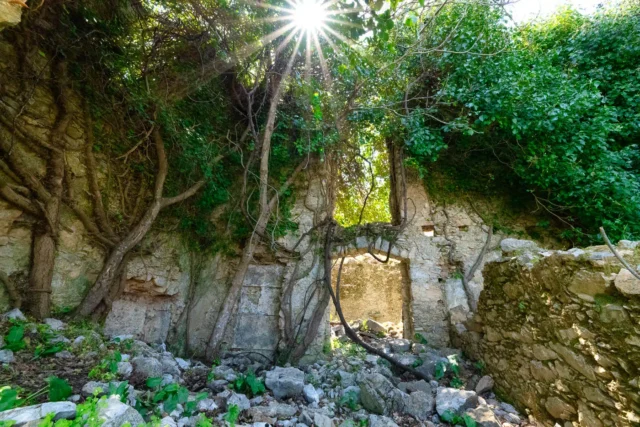227
listings found
Categories
Active filters:
Saint John the Theologian in Margarites
14th-century Byzantine church in Margarites, Crete, featuring frescoes from 1383.
Monastery of the Saviour Christ and Saint Gideon (Metochi Karakalou)
16th-century monastery in Margarites, Crete. Dependency of Karakalou Monastery, Mount Athos. Associated with Saint Gideon. Restored.
The Ancient Olive Tree of Ano Tripodo
The 2,600-year-old monumental olive tree in Ano Tripodo, Crete. A testament to time and nature's resilience.
Agia Anna Church in Ancient Eleutherna
The Agia Anna basilica in Eleutherna offers insights into the city's transformation into a Christian center. Learn about its location, history, and significance.
Agia Eirini and Agios Markos in Eleutherna
Agia Eirini and Agios Markos are two archaeological sites in Eleutherna, Crete, featuring Early Christian basilicas.
The Acropolis of Eleutherna
The acropolis of Eleutherna, located on Prines hill, offers a glimpse into the city's history from the Bronze Age to the Early Byzantine period.
The Orthi Petra Necropolis at Eleutherna
Orthi Petra Necropolis in Eleutherna reveals Early Iron Age burial practices and social structures through diverse burial types and rich grave goods.
Katsivelos in Eleutherna
The Katsivelos archaeological site, located on a strategic hill near Eleutherna, Crete, shows continuous human activity from the Final Neolithic/Early Minoan II (c. 3000 BCE) through the Geometric period (c. 700 BCE). Excavations by the University of Crete revealed a settlement history starting with simple FN/EM II structures. The Middle Minoan period shows increased complexity with larger buildings, while the Late Minoan period suggests a decline in scale. The final Geometric phase indicates a small, scattered settlement before its abandonment.
The Hellenistic Settlement at Nisi, Eleutherna
The Hellenistic settlement at Nisi excavations has revealed houses, pottery kilns, and streets that show a focus on pottery production and trade.
Makrygianni, Mylopotamos
Makrygianni is a settlement located in the Rethymno regional unit on the island of Crete, Greece. It belongs to the Municipality of Mylopotamos.
Smiles in Amari
Smiles, an abandoned village in Crete, holds remnants of a long history. Explore its Byzantine churches, tragic past, and current state.
Gourgouthoi abandoned village
Gourgouthoi, an abandoned village in Crete's Amari Valley, bears a history from the Venetian era, with records dating back to that period. The village features 15th-century churches like Agios Georgios (Merkatone) and Zoodochos Pigi, as well as a 14th-century Byzantine church, Agios Ioannis Prodromos and Agia Anna, with fresco remnants. In 1944, Nazi forces destroyed Gourgouthoi, executing male residents, leaving ruins and a few seasonal residences. Located 42 kilometers from Rethymno, at 680 meters elevation, the area is known for fruit trees and natural springs. The name possibly derives from "gourgouthos," meaning small water pools, or Latin "gurguetium," meaning hut.
Genna, Amari
Genna, in Crete's Amari Municipality, features a rich history from Minoan to Venetian eras. The village houses a Late Minoan III chamber tomb and a Hellenistic-Roman cemetery, linking it to ancient Sybrita. Historical records note Venetian and Ottoman presence, with documented population changes. The area, known for its fertility, includes 14th-century churches with Byzantine frescoes, such as Saint Onoufrios and Saint Stephen. An ancient olive tree, over 2000 years old, stands nearby, reflecting the village's agricultural heritage. The village also has a spring with potable water and a shaded area.
Perama, Mylopotamos
Perama is a settlement located in the Rethymno regional unit on the island of Crete, Greece. It belongs to the Municipality of Mylopotamos
Zoniana, Mylopotamos
Zoniana is a settlement located in the Rethymno regional unit on the island of Crete, Greece. It belongs to the Municipality of Mylopotamos
Thronos, Amari
Situated at 540 meters on the western foothills of Psiloritis, 32 kilometers from Rethymno, the village overlooks the Amari valley. Its location is near Throniani Kefala hill, the site of the ancient city of Sybritos, inhabited since the Late Minoan II period and flourishing from Archaic to Roman times, connecting Crete's north and south coasts and minting currency. During the second Byzantine period, it possibly served as the seat of the bishop of Sybritos, influencing its name ("throne"). Historical mentions include Barozzi (1577), Venetian censuses (1583, 1630), and various Egyptian and Greek censuses tracking population changes from 76 inhabitants in 1900 to 65 in 2011. Today, it retains traditional charm with some tourist facilities and belongs to the Municipality of Amari.
Kalogeros, Amari
Kalogeros is a settlement located in the Rethymno regional unit on the island of Crete, Greece. It belongs to the Municipality of Amari.
Apostoloi, Amari
Apostoloi, located 30km southeast of Rethymno, Crete, is a village with historical records dating to 1577, noted by Francesco Barozzi. It has demographic records from Venetian and Ottoman censuses, including a 1583 count of 175 inhabitants and later Ottoman designations. The village, part of the Amari region at 500 meters elevation, features churches like Agios Nikolaos and Agios Spyridonas, reflecting its cultural heritage. A primary school, established in 1916, highlights its educational commitment. With a population of 162, Apostoloi maintains its rural identity, showcasing traditional Cretan architecture and enduring community traditions.
Voleones, Amari
Voleones is a settlement located in the Rethymno regional unit on the island of Crete, Greece. It belongs to the Municipality of Amari










